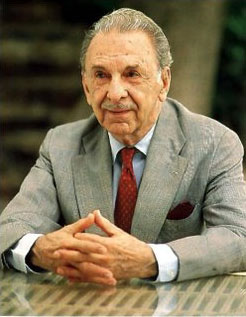
THE TAJ MAHAL PARADOX
Author - Anil Chawla

|
THE TAJ MAHAL PARADOX
|
Taj Mahal is, in all probability, the most magnificent mausoleum on earth. The common belief is that Mogul Emperor, Shahjehan built it. There are many who argue that it was a Hindu palace or temple which Shahjehan usurped and refurbished as a mausoleum. Even if Shahjehan did not build the Taj but only modified an existing building, there can be no doubt that the Taj Mahal cost the Mogul emperor a significant amount of resources.

When one considers the mammoth resources utilized for constructing / rebuilding, one is bound to question the benefits that this grand building yielded. The fact is that the Taj Mahal is magnificently useless. It served no purpose except to pamper to the ego and whims of a king. It comes as no surprise that Taj Mahal signifies the beginning of the end of the Mogul Empire.
Taj Mahal shows all that had gone wrong with the Mogul rulers. They treated wealth as a means to personal aggrandizement. In their hands wealth ceased to be an instrument of production or growth or security and only served their personal agenda of ego pampering, luxury and of satisfying any stupid whim that crossed their poorly educated minds. This attitude towards wealth led to steady fall of Mogul emperors with each successive one being worse than his predecessor. The last Mogul emperor did not even know what governance is all about. He is remembered only for the kites that he used to fly and for the sad poems that he wrote. British soldiers did not have to make much effort to capture him and pack him off to exile.
The seeds of Mogul defeat were actually sown when Shahjehan started work on Taj Mahal. This is the Taj Mahal paradox. Taj Mahal, on one hand, stands as a symbol of the success, achievements and grandeur of Mogul rule in India, while on the other hand, it signifies all that was rotten with the Moguls.
Taj Mahal Paradox is not just about Moguls and their monuments. It applies to every society, organization and even individual. When any person or organization or society starts spending its resources on activities or things that serve no useful function except to pamper to some egos or satisfy some whims, one creates apparent symbols of achievement that one can display with pride. The paradox is that while one is displaying one’s strength and achievements, in reality one is only making oneself weaker and making oneself vulnerable to potential attackers or competitors.
One can see examples of this in everyday life. Organizations, whether commercial or service, that build beautiful monumental buildings instead of devoting their resources for productive ends perish sooner or later. JRD Tata, the man who steered Tata Group for decades, lived in a rented flat all through his life. He is remembered today for his simplicity and for the institutions that he built. On the other hand, there can be no dearth of examples of industrialists who build palatial mansions as soon as they taste even moderate success. Without commenting on the businessmen who build palaces, one can surely take note of the steel-like inherent strengths of Tata group.

The fascination for monumental buildings is not confined to only businessmen. Even social, political and religious organizations sometimes indulge in this.
The Taj Mahal malaise extends beyond buildings. Expensive advertisements that attempt to glorify someone or the other can often be seen in newspapers and in hoardings on Indian roads. The only purpose such advertisements serve is to take someone or the other on an ego-trip.
Any activity that has no functional utility and only builds a grand image of achievements can be called as a Taj Mahal activity. Expensive marriages where money is spent like water can be cited as an example.
At the level of an individual one can often see traces of this Taj Mahal malaise. Someone I know considers it below his status to wear a shirt costing less than a thousand rupees, while I have never been able to buy a shirt even half the price. Do his expensive shirts make him a better person? People might admire his expensive shirt but they are not likely to talk with him or deal with him just because of his shirt.
Expensive shirts, outlandish designer clothes, jazzy shoes, flashy cars, the best perfumes and cosmetics, fashion accessories – one acquires these to show that one is someone who has achieved something in life. Apparently, it seems to work. But it works both ways. While one attracts oohs and aahs with one’s attire and belongings, one must not forget that each of the items that attracts such attention contributes to weakening of the owner.
Strength of a person or organization or business enterprise does not come from ostentatious display. It comes from continuously investing in productive activities or things. A person who spends a million in buying a wardrobe full of clothes is much weaker than a person who spends the money to buy books or equipment that he or someone in has family or friends or associates can put to productive use.
When you visit Taj Mahal next time, remember that the man commonly credited with building Taj Mahal spent the last decade of his life crying in prison and did not even get a decent burial. Let each one of us vow to abstain from building a small Taj Mahal around oneself!
ANIL CHAWLA
31 December 2007
Please write to me your comments about the above article.
 samarthbharatparty@gmail.com
samarthbharatparty@gmail.com

ANIL CHAWLA is an engineer (and now a lawyer too) by qualification but a philosopher by vocation and a management consultant by profession.

Website developed and managed by

MF-104, Ajay Towers, E5/1 (Commercial),
Arera Colony,
Bhopal - 462016 INDIA

© All Rights Free